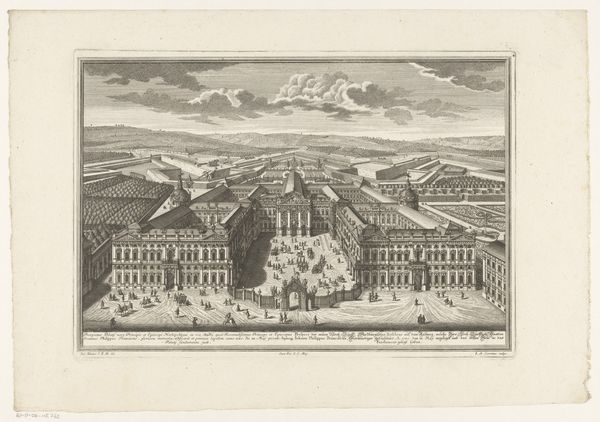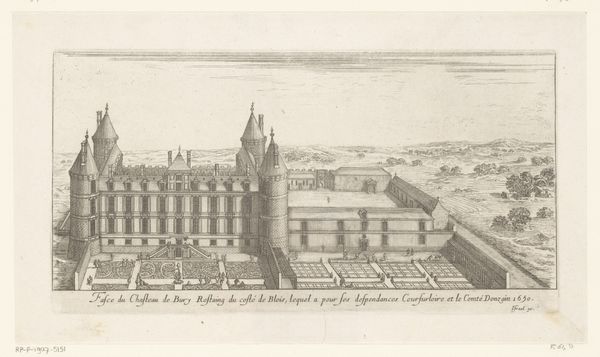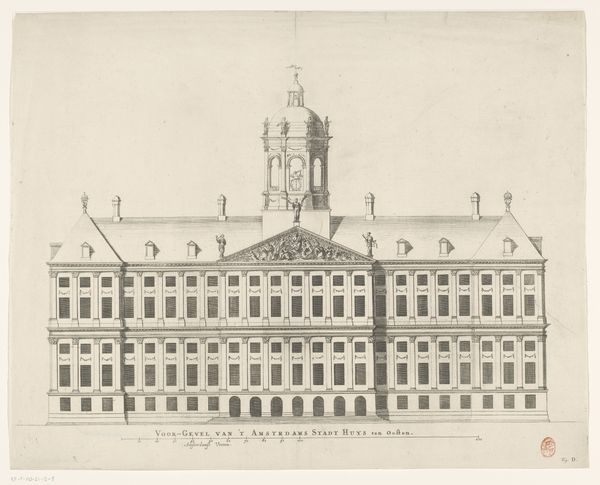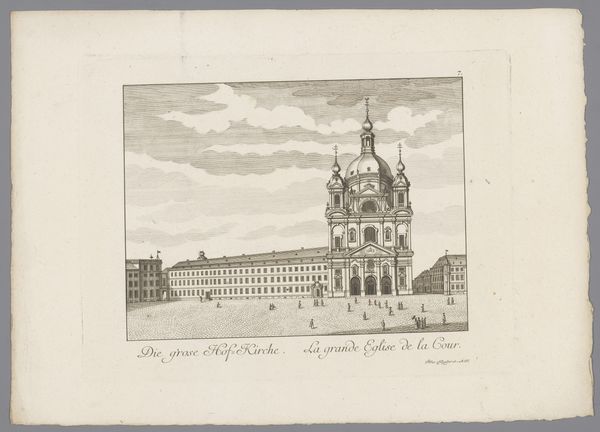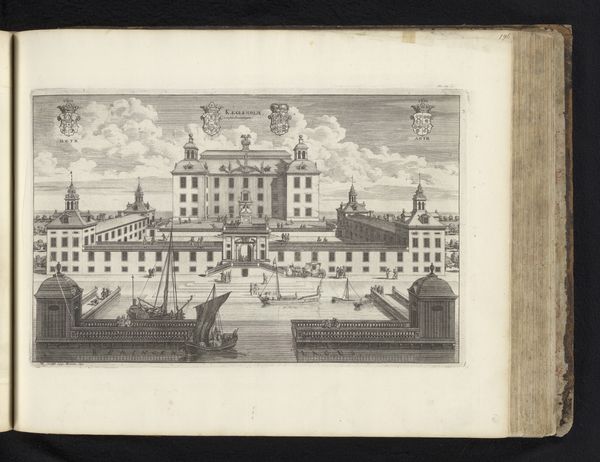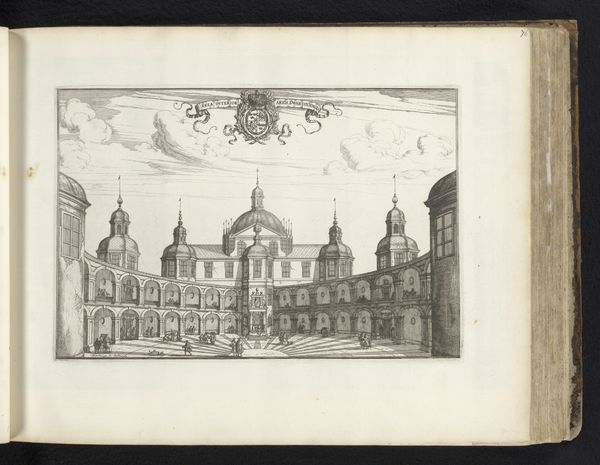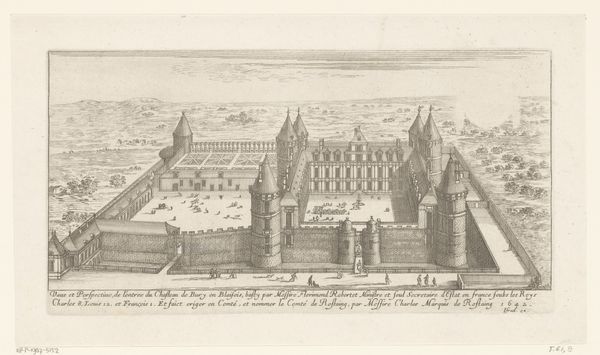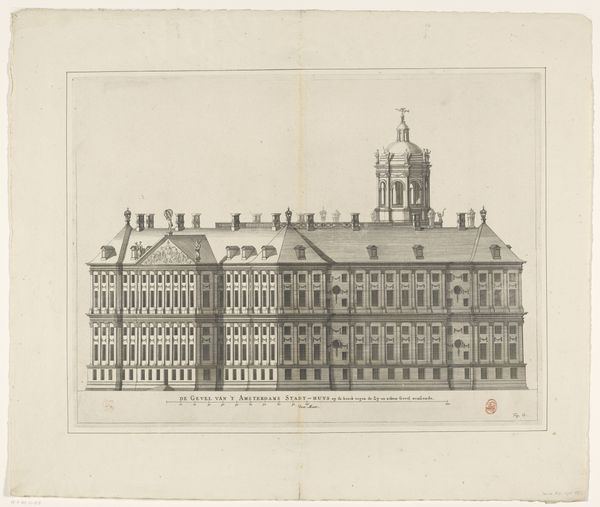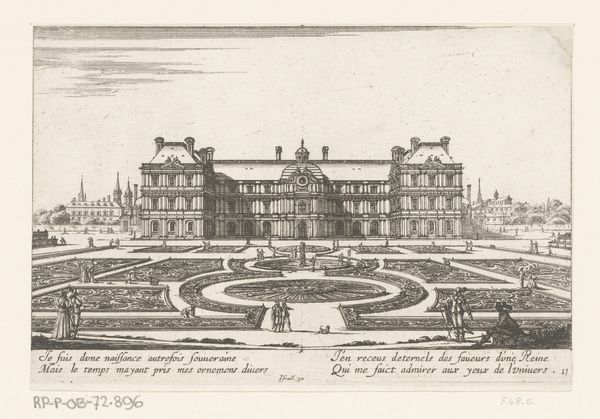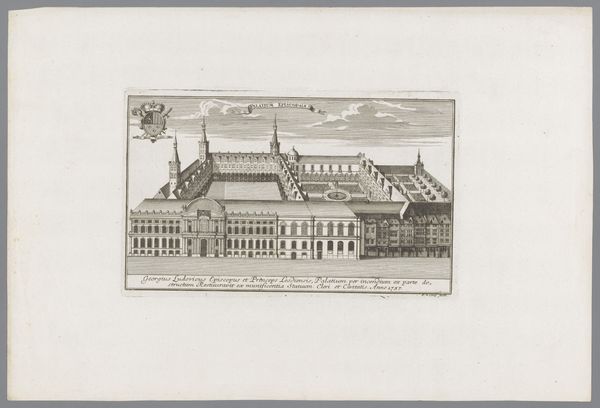
print, engraving, architecture
#
baroque
# print
#
cityscape
#
engraving
#
architecture
Dimensions: height 203 mm, width 330 mm
Copyright: Rijks Museum: Open Domain
Curator: I’m immediately struck by the rigid order, almost a kind of enforced perspective, visible in this architectural rendering. Editor: You’re right. Here we have a rather fascinating 1726 engraving, simply titled "Gezicht op het Escorial" which translates to "View of El Escorial.” El Escorial being the historical residence of the King of Spain. Curator: The rigorous geometry imposes an immediate sense of power, doesn’t it? Look at how the architecture is relentlessly mirrored and segmented—the facade divided and subdivided. It's Baroque opulence meets rationalist design. Editor: Yes, the building as a seat of power. El Escorial was central to Philip II's reign, a monument to his power and religious piety after the Spanish victory at the Battle of San Quentin. We must remember this context. Curator: Indeed. Note how the lines lead the eye directly to the most ornamented point. Even the natural landscape appears subjugated, rigidly organized as formal gardens in line with Baroque principles. It feels intentionally overwhelming. Editor: The landscape itself plays an integral role in expressing authority. In these grand architectural projects, natural space had to reflect the will of the sovereign, shaping social attitudes. Curator: Absolutely, the architectural symmetry reinforces this. This meticulous approach extends even to the engraving itself – notice how the artist balances detail with a sense of immense scale, using perspective to dwarf human figures? Editor: And engravings like this weren't mere decoration; they were critical in circulating ideas and ideals about power. Imagine the image circulating amongst royal families in Europe! Curator: True, it is a printed declaration! It uses architectural elements as tools to create a lasting statement of political dominance through design. Editor: Considering that engravings like this played a central role in reinforcing and broadcasting power through printed imagery brings new life to what otherwise is an imposing representation. Curator: Indeed, examining both its aesthetic qualities and historical purposes significantly deepens our appreciation. Editor: Agreed. There is more at play here than initially meets the eye.
Comments
No comments
Be the first to comment and join the conversation on the ultimate creative platform.
